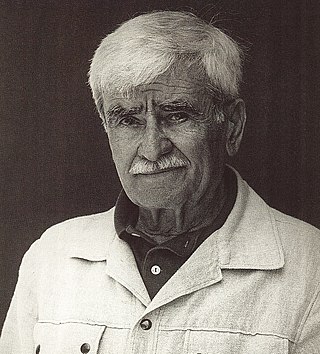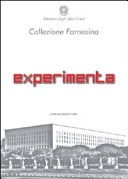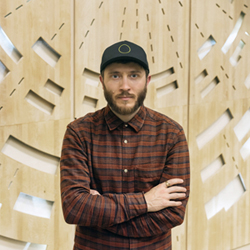Structure
The nine-story building was designed in 1935 by architects Enrico Del Debbio, Arnaldo Foschini and Vittorio Ballio Morpurgo. It was originally designated to be the headquarters of Italy's National Fascist Party. Construction was halted in 1943 and throughout World War II.
The facade consists of travertine. Though this type of facade is commonly linked to the rationalist style of Giuseppe Terragni, it is, in this case, derived from contemporary fascist ideals.
The building consists of more than 1,300 rooms, is 169 meters in width, 51 meters tall, with a total area of 120,000 square meters and has a total internal volume of approximately 720,000 cubic meters. It is comparable in size to the Caserta Palace and is one of the largest buildings in Italy.
The Palazzo della Farnesina was completed in 1959, varying only slightly from its original design. Upon completion, it consolidated the 13 separate offices of the Italian Ministry of Foreign Affairs. Since completion of the building, the word "Farnesina" has been used synonymously to refer to the Italian Ministry of Foreign Affairs. Its name comes from the land on which it rises, the area between Monte Mario and the Tiber, which were called the Farnese Gardens (Orti della Farnesina) due to the ownership of Pope Paul III who was originally named Alessandro Farnese.
The building should not be confused with the 16th-century Villa Farnesina, also often called simply "the Farnesina," in Via della Lungara.
Art collection
In 1999 the Directorate General for Promotion and Cultural Cooperation of the Ministry of Foreign Affairs launched an initiative to allow public access to the collections of the Palazzo della Farnesina. This was done by opening galleries and collections to the public via a series of exhibitions with a focus on 20th century Italian art. [1] The Farnesina Collection [2] trace the history of twentieth-century Italian art through Art Nouveau, Futurism, abstract art, Arte Povera, Transavantgarde, and the New Roman School. [3]
In 2008, the collection of Italian art of the Farnesina was augmented by a new collection consisting of the works of the most recent generations of Italian artists. [4] The new Farnesina Experimenta Collection [5] was inaugurated on 5 July 2008 at the time of Open Doors at the Farnesina. [6]
On March 13, 2009 at Villa Madama in Rome, the Foreign Minister, Franco Frattini, Minister for Culture, Sandro Bondi, and the Minister of Economic Development, Claudio Scajola announced a third collection entitled the Farnesina Design Collection. [7] [8]

Palazzo Farnese or Farnese Palace is one of the most important High Renaissance palaces in Rome. Owned by the Italian Republic, it was given to the French government in 1936 for a period of 99 years, and currently serves as the French embassy in Italy.

The Villa Farnesina is a Renaissance suburban villa in the Via della Lungara, in the district of Trastevere in Rome, central Italy. Built between 1506 and 1510 for Agostino Chigi, the Pope's wealthy Sienese banker, it was a novel type of suburban villa, subsidiary to his main Palazzo Chigi in the city. It is especially famous for the rich frescos by Raphael and other High Renaissance artists that remain in situ.

Regola is the 7th rione of Rome, Italy, identified by the initials R. VII, and belongs to the Municipio I. The name comes from Arenula, which was the name of the soft sand that the river Tiber left after the floods, and that built strands on the left bank.

Alberto Burri was an Italian visual artist, painter, sculptor, and physician based in Città di Castello. He is associated with the matterism of the European informal art movement and described his style as a polymaterialist. He had connections with Lucio Fontana's spatialism and, with Antoni Tàpies, an influence on the revival of the art of post-war assembly in America as in Europe.

Palazzo Farnese is a palace in Piacenza, northern Italy.

Foro Italico is a sports complex in Rome, Italy, on the slopes of Monte Mario. It was built between 1928 and 1938 as the Foro Mussolini under the design of Enrico Del Debbio and, later, Luigi Moretti. Inspired by the Roman forums of the imperial age, its design is lauded as a preeminent example of Italian fascist architecture instituted by Mussolini. The purpose of the prestigious project was to get the Olympic Games of 1940 to be organised by fascist Italy and held in Rome.

The Ministry of Foreign Affairs and International Cooperation is the foreign ministry of the government of the Italian Republic. It is also known as the Farnesina as a metonym from its headquarters, the Palazzo della Farnesina in Rome. The current Minister of Foreign Affairs is Antonio Tajani.
Enrico Del Debbio was an Italian architect and university professor.

Collezione Farnesina Experimenta is a bilingual book that assembles and catalogues the eighty works of the Farnesina Experimenta Art Collection, housed in Palazzo della Farnesina.
The Farnesina Experimenta Art Collection is a contemporary Italian art collection exhibited at the Palazzo della Farnesina, the seat of the Italian Ministry of Foreign Affairs in Rome, Italy.
The 15th Rome Quadriennale or XV Rome Quadriennale is an Italian art exhibition held between 19 June and 14 September 2008 at its historical site, the Palazzo delle Esposizioni of Rome, Italy.

Fabrice de Nola is an Italian-Belgian artist born in Messina (Sicily) in 1964. He introduced the use of QR codes in oil paintings. In 2006, he created the first oil paintings containing texts and web connections to be used on mobile phones.
The architecture of Rome over the centuries has greatly developed from Ancient Roman architecture to Italian modern and contemporary architecture. Rome was once the world's main epicentres of Classical architecture, developing new forms such as the arch, the dome and the vault. The Romanesque style in the 11th, 12th and 13th centuries was also widely used in Roman architecture, and later the city became one of the main centres of Renaissance and Baroque architecture. Rome's cityscape is also widely Neoclassical and Fascist in style.
The culture of Rome in Italy refers to the arts, high culture, language, religion, politics, libraries, cuisine, architecture and fashion in Rome, Italy. Rome was supposedly founded in 753 BC and ever since has been the capital of the Roman Empire, one of the main centres of Christianity, the home of the Roman Catholic Church and the seat of the Italian Republic. Due to its historical and social importance, Rome has been nicknamed the Caput Mundi, or "capital of the world".

Paolo Consorti is an Italian artist and film director.

Bruno Ceccobelli is an Italian painter and sculptor. He currently resides and works in Todi, Italy. Ceccobelli was one of the six artists of the Nuova Scuola Romana or Scuola di San Lorenzo, an artistic movement that grew out of the Arte Povera and Transavanguardia movements of the latter twentieth century.

The Museo di Roma is a museum in Rome, Italy, part of the network of Roman civic museums. The museum was founded in the Fascist era with the aim of documenting the local history and traditions of the "old Rome" that was rapidly disappearing, but following many donations and acquisitions of works of art is now principally an art museum. The collections initially included 120 water-colours by the nineteenth-century painter Ettore Roesler Franz of Roma sparita, "vanished Rome", later moved to the Museo di Roma in Trastevere.

Luca Pozzi is an Italian artist.

Studio fotografico Vasari it is one of the oldest Italian companies operating in the field of photography.













